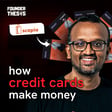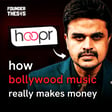
Fello’s blueprint for gamifying GenZ savings - Manish Maryada
How did Manish Maryada turn Fello into India’s go-to gamified savings app for Gen-Z—blending digital gold and P2P lending with prize-linked rewards? In this episode, we unpack the product, growth loops, and the future of fintech in India.
Fello is reimagining how young Indians save and invest—turning habit formation into a game. In this candid conversation with Akshay Datt, Manish Maryada (YC W22) breaks down Fello’s mission, how prize-linked savings drive frequency, why digital gold (Augmont) and P2P lending (Lendbox) anchor early portfolios, and how the team scaled to hundreds of thousands of users without cashback gimmicks. We discuss cohort wins and misses, retaining first-time savers, the funding-winter playbook, and how Fello navigates policy gray zones around gaming, GST, and digital gold. Expect contrarian takes on growth vs. trust, rails vs. UX, and what’s next for Gen-Z finance. If you’re a founder, operator, or investor tracking fintech disruption and distribution in India, this one’s a masterclass in product-led growth and regulatory literacy.
• How Manish built Fello’s prize-linked savings engine for Gen-Z
• Lessons from scaling fintech in India’s funding winter
• Fello’s growth levers: digital gold, P2P, and habit loops
• Macro shifts: GST, gaming policy, and the future of digital gold
• Founder insights on competition, unit economics, and trust
Subscribe to the Founder Thesis Podcast
Follow Akshay Datt on LinkedIn for exclusive content
Visit founderthesis.com for more founder stories
00:00 - Manish Maryada’s Journey & Fello Origin
04:12 - Gamified Savings: Prize-Linked Model
10:40 - Digital Gold via Augmont: Trust & Safety
18:05 - P2P Lending with Lendbox: Returns & Risk
26:18 - Growth Without Cashbacks: 750K Users
36:42 - Funding Winter: Fintech Survival Playbook
48:10 - Regulatory Landscape: GST, Gaming, Gold
57:55 - What’s Next for Fello & Gen-Z Finance
Manish Maryada, Fello, Fello app, Fello India, gamified savings, prize-linked savings India, digital gold India, Augmont, P2P lending India, Lendbox, YC W22, Gen-Z investors India, savings app India, fintech startups India, funding winter India, fintech regulation India, GST online gaming, digital gold regulation India, product-led growth, Akshay Datt, Founder Thesis Podcast



















